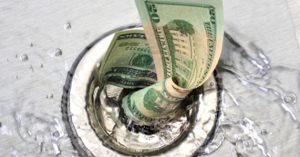 The Japan Central Bank shocked markets last week – not easy to do – by lowering the official bank interest rate to negative territory. They are not the first, but are among the biggest. What is going on and why should you care?
The Japan Central Bank shocked markets last week – not easy to do – by lowering the official bank interest rate to negative territory. They are not the first, but are among the biggest. What is going on and why should you care?
How is this even possible?
It has been long thought that interest rates could never be negative, at least not for any period of time. But they have been now for more than a year in Europe, thanks to the European Central Bank (ECB). A negative interest rate means an investor pays “rent” for a bank to hold one’s money. You get back less than you put in. What?
Official and unofficial
Let’s make a distinction here between official negative rates and unofficial. Unofficial is when bonds are so sought after that investors will pay a premium and get back par. Usually this happens in times of great distress and panic, such as December of 2008 when interest rates in the US went briefly negative. Unofficial negative rates, like any other unusual security prices, happen because of extreme market forces.
Official rates are official, set by a central bank, not by supply and demand. They start negative and end negative. So far, two big central banks – the ECB (European Central, which is like our Fed) and the Japan Central Bank have gone negative. So have Switzerland, Denmark and Sweden. German government bonds are trading at negative rates, but are not officially issued at negative rates.
What does it all mean?
Central banks set negative rates for a very specific reason – to spur lending. The theory is that banks will be compelled to lend much more of their reserves so they can avoid losing money by holding cash. Some say negative rates are a last resort, after zero interest rates and quantitative easing (buying huge amounts of domestic bonds) have failed to produce growth. That’s the plan, at least. Japan has been stuck in zero growth mode for many years and Europe has been stalling for a long time. It all makes our US 2.5 percent growth look pretty good by comparison.
Beware unintended consequences
To say we are in uncharted waters with negative interest rates is an understatement. Nobody really knows if they will achieve their desired purpose or trigger some unexpected and undesired consequences. Two facts stand out, however. In a negative rate world, any yield is good. Some yields are quite good, if you are willing to take the risk with small allocations, like SJNK (low-quality corporate bonds) and VWOB (emerging market bonds). Secondly, one way to make money with negative interest rates is to not buy them. And to also stay away from anything like them, including 0.5 to 1 percent bonds.
Bonds have always been seen as a low risk, low volatility safe haven relative to stocks. In many ways that is still true, but with the appearance of official negative interest rates — paying a bank to hold money we could hold in our mattress for free — investors need to take a closer look at debt investments and make sure they understand what they (or their advisors) are really buying. It’s a new world.
John Osbon – josbon@osboncapital.com
Weekly Articles by Osbon Capital Management:
"*" indicates required fields
